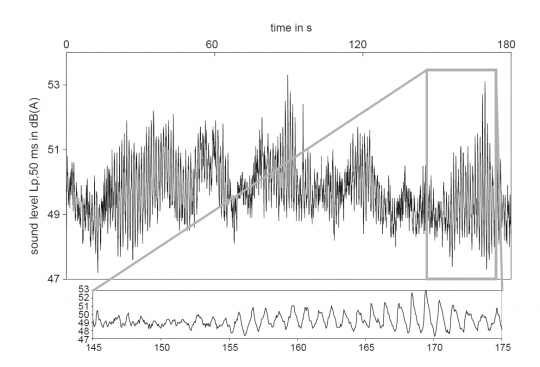The evidence for adverse noise impact from wind farms, wind turbines and (excess) amplitude modulation is growing. Annual conferences on wind farm noise are held all over the world. Arguably the best way to better understand wind farm noise is to go and hear it for yourself but unless you visit under the right conditions will not experience the true impact. Best of all is to experience it in an affected home. You will need to visit after dark so check during the daytime where you can listen from. More advice is provided below under Hear it for yourself. Two documented cases are also included below.
G.P van den Berg
Work by GP van den Berg has been very much on the forefront of understanding amplitude modulation noise from wind farms and particularly in identifying night time problems with wind shear and atmospheric stability. The graph below is taken from his paper 'Effects of the wind profile at night on wind turbine sound' published in the Journal of Sound and Vibration. It shows measurements of amplitude modulation (AM) near a dwelling 750m from the nearest turbine.

Fig. 8. Sound pressure level caused by wind turbines per 50ms near dwelling at 750m from nearest turbine (including reflection at façade at 2m) over a 3min period; part of the sequence is amplified below.
Wind farm noise - hear it for yourself

1) A warm, sunny day

2) Followed by a clear, cloudless night

3) Wind speeds above 5m/s. Close iso-bars.

4) Stand down wind of turbines

5) Not too close (500m+)

6) Low background noise (high wind shear)
Although lower wind speeds will aid hearing AM at ground level there still needs to be sufficient wind speed at hub height for the turbines to be operating. Most turbines cut in at a wind speed of 4-5m/s (11mph), as a guide, avoid periods when the isobars on a surface pressure chart are very far apart.
